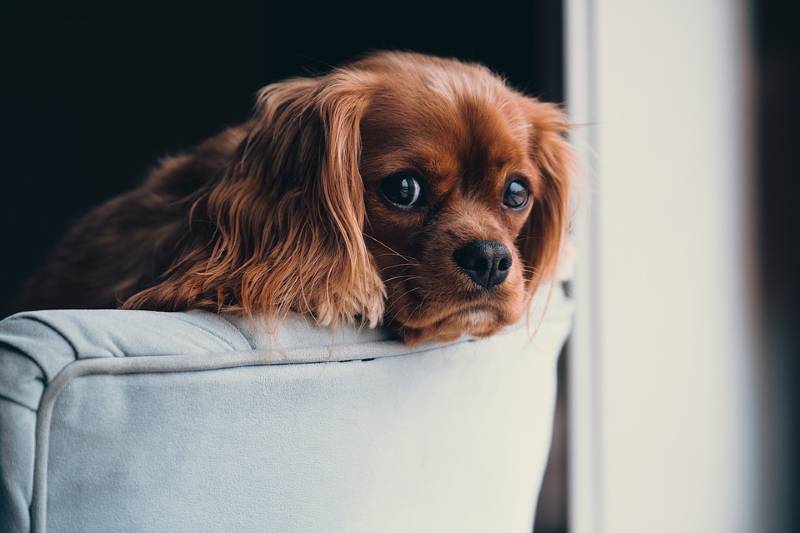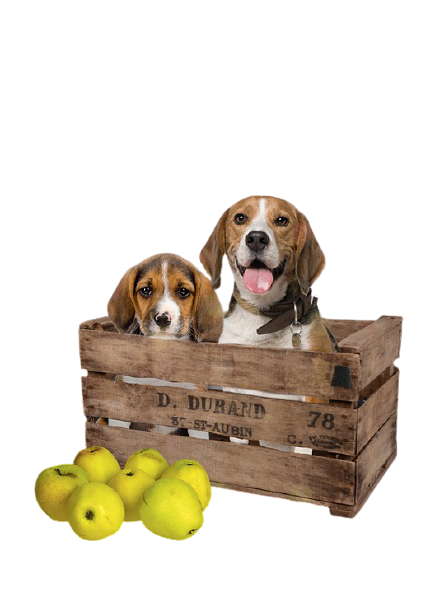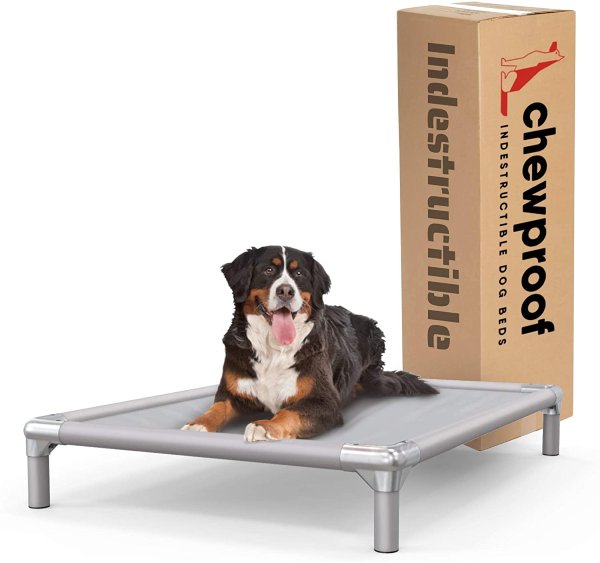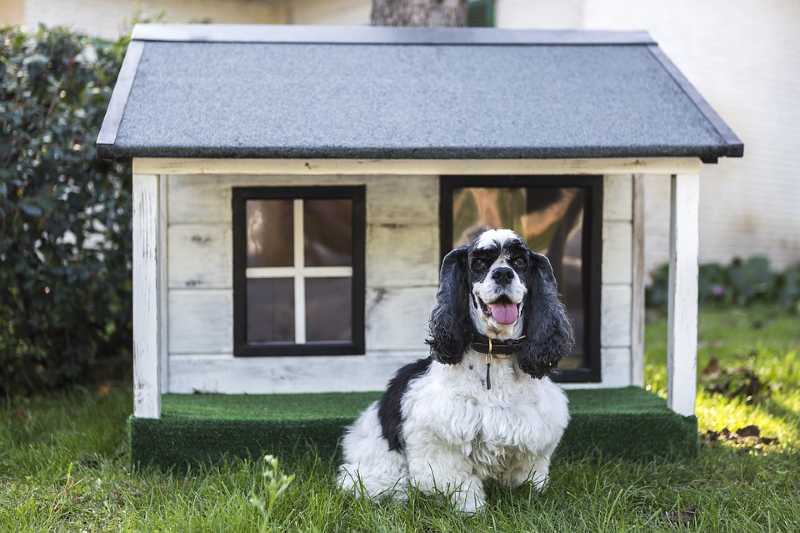Dogs have long been one of the most popular home pets and man’s best friend. We want our dogs to be comfortable as most of us consider them to be part of our family. We will go the extra mile when it comes to the comfort of our pets. For a dog parent, caring for your pup entails providing him with sufficient care and attention, including housing and bedding, which is every animal’s fundamental need.
When it comes to dog houses, you can choose between several appropriate alternatives while staying within your budget. Dog homes can be external or internal, depending on the sort of habitation you have, your preferences, or the dog’s size. They are also made of different materials and come in many shapes and sizes.
If you are confused about what is the best option for your pooch, read on to find out more.



Dog House vs Dog Crate: What's The Difference & Which Is Better?

Dog houses and crates are two entirely different types of accessories. A dog house is a semi-permanent structure mainly used to house dogs outside in backyards or other outdoor spaces. On the other hand, dog crates are portable units usually used for either transporting or restraining your dog. Both dog houses and crates can be used either indoors or outdoors. Understanding the following will put you in a position to make the best decision on what option works best for you and your canine buddy.
Who should use dog kennels?
- Dog owners who have large dogs.
- Pet owners that have pups who prefer to stay outdoors.
- Those who have vicious dogs that need restraining during the day.
- People that own guard dogs that do not have to be out all day.


Who should use dog crates?
- People who frequently travel with their four-legged companion.
- People who own dogs that suffer from separation anxiety.
- Dog trainers


How to insulate a dog house to keep it warm in winter and cool in summer?

Keeping a dog house cool in summer
- Place the dog home in the shade of a tree or beneath the house eaves.
- Place the dog home on 12-inch square pavers to allow air to circulate beneath it.
- Insulation. Inside the dog house, install an insulation layer like a foam board over the floor, the wall, and the ceiling. This will help maintain the dog house’s temperature and prevent your dog from experiencing excessive temperatures.
Keeping a dog house warm in the winter
- Place the dog house in a sheltered area. This may be on the windward side of your house, inside the garage, or on a covered patio.
- The dog house should be weatherproof. Cover the walls and roof with an exterior covering, such as house wrap.
- Make the dog house more energy-efficient by insulating it.
- Protect the entrance of the dog house.
- Warm up the dog house.
Outdoor vs. indoor dog house: which is a better choice for large breed dogs?
Most large-breed dogs can withstand the outdoor demands, but tiny breeds are too vulnerable to the cold or animal attack so an indoor dog house will suit the smaller breeds better. Large dogs usually have a thin layer of fat around their spine and ribs as insulation during winter. During the hot summer days, these heavy-coated breeds require some assistance, such as a cool outdoor spot to relax in and groom to aid in the shedding of the winter coat they have grown up in. Outdoor large dog kennel suits large breed dogs.
A lot also depends on the size of your backyard. If you do not have backyard or the size is pretty small, then you may have no choice but to place the dog house inside your home.
The choice between outdoor vs indoor will also depend on your pooch’s medical condition. If your pup suffers from allergic reactions then buying an indoor dog house will be a better choice for you.
What to look for when selecting a heavy-duty dog crate
An indestructible dog crate is the best choice for a large and powerful dog, but smaller ones may also require a rigid crate. Any dog with enough time can probably bend thin wire and chew through plastic. So, even if your dog isn’t huge, heavy-duty crates are still the best option if you know he’s a chewer or digger.
Another reason to have a heavy-duty crate is if your dog is potentially hostile. They are sturdy enough to prevent unintended escapes and hostile encounters between your dog and your visitors.
Choose The Correct Size
To choose the proper crate size for your dog, keep in mind that the box should be large enough that the dog can lie on its side while fully stretched out, as well as large enough for the dog to turn around freely while standing up without banging their head. Therefore, a slightly larger crate is preferable to a crate that is too tiny.
Determine where you’ll put it once you’ve chosen the size you require. The box should be put in a quiet area where the dog can relax. Remember to provide enough space for the crate to open the entrance easily by paying enough attention to the door’s direction.
Dog Proof
If your dog is a power chewer, avoid cloth and plastic crates, which can be scratched or chewed through. Depending on your requirements, a heavier version of the standard wire or metal box may work for you.
Safety
Choose a crate with two latches and use them both for normal wire crates. Although some dog crates have just one latch, it is unsafe to use only one latch on the two-latch design – they are located differently such that if only one is closed, the dog may be able to open the door and become caught partially. You may use a carabiner or S-clip to seal the door shut on a wire container for safety.
Portability
Most of the time pet owners buy a crate for transporting their dogs from one place to another. In this case, you will have to look at the weight of the crate and the ease of carrying the crate around. Does the crate comes with carrying handles, is it foldable or collapsible, etc. Ignoring portability is a big mistake when shopping for a heavy duty dog crate.
Benefits of chew proof dog bed for crates

If you want your pup to feel comfortable in his crate, then place a good quality bed inside the crate. Dog beds that are chew-resistant are the ideal choice for long-term and dependable use, regardless of the breed of your dog. Chew resistant beds can handle bites from your power chewers. They do not suffer from extensive wear and tear thus the lifespan of such dog bed is much higher than the other ordinary beds.
There are several different aspects to consider while shopping for the best chew-proof bed. To keep your pet friend and family safe from dangerous materials and chemicals, look for a product composed of non-toxic and high-quality components.
One of the most significant advantages of tough dog beds is that they are simple to clean despite the rugged materials used to construct them. Another important benefit is that the bed is composed of a puncture-resistant shell and strong fibers to ensure that your dog cannot chew through it.
